It’s hard to believe that Francis Manapul’s first issue of Flash appeared in April, 2010. Over less than two years, and 13 total issues, Manapul has already left an indelible mark on the character’s artistic history, pushing to join the ranks of inimitable long-term Flash artists alongside names like Carmine Infantino, Irv Novick, Greg LaRocque, Mike Wieringo and Scott Kolins.
Using innovative layouts and inventive portrayals of sound and perception, Manapul has brought readers deeper into the world of the Flash. To celebrate a year that saw Manapul take over writing the Flash title with Brian Buccellato – a then-unexpected extension of his Flash run – we present the finest in Francis Manapul Flash artwork from 2011! Drawing from The Road to Flashpoint and the first four issues of the New 52 story Mob Rule, there’s far more than we could fit into one post. Check out the highlights after the jump…
FLASH #10, JANUARY 2011:
Geoff Johns second Flash run, from Rebirth to Flashpoint, cast Barry Allen as a man apart. Emotionally removed from his friends and family, the character was a far moodier version of the one current featured in the New 52 Flash. Manapul captured the balance, matched by Buccellato’s colors. We interviewed Manapul right after this issue came out and discussed his portrayal of Flash in Geoff Johns’ The Dastardly Death of the Rogues, leading into The Road to Flashpoint:
I also created a “speed color chart” for Brian to run with. Basically similar to action photography, when the subject is in focus the background will be out of focus, and vice versa. There was no reason why we couldn’t use color or lack thereof to also put that extra emphasize on the speed effect. I feel like I can go on and on about this, and we hope to show even more new stuff in future issues. We want to continue to innovate.
FLASH #12, APRIL 2011:
Manapul only illustrated a couple of pages in Flash #12, but they were important ones. Barry’s relationship with Patty Spivot was nudged in its current direction, and Barry talks broadly about making things “better.” These pages represent some of the initial rumblings of Flashpoint and the New 52.
It makes perfect sense that, once he took over writing duties, Manapul’s artwork on Flash evolved. From the title spread to the cliffhanger ending, this issue was a re-introduction to the character, as well as the artist. Manapul addressed the dual roles in an interview with Newsarama back in October:
Francis Manapul: Yeah, it’s a much more integrated process. And I do think we’re in a fortunate position to be co-writing, drawing and coloring the book. We’re able to really utilize every aspect of the art to tell the story.
Seeds were also sewn for the use of layered paneling in the portrayal of Augmented Cognition (as seen in issues 2 – 4, so far), on pages including the ones described by Kelson in his review of the issue:
I particularly liked the fall from the helicopter and the page showing Barry in his apartment. And when was the last time you saw a splash page of the Flash standing still (and not posing dramatically) look so good?
FLASH #2, October 2011:
Featuring the new concept of applying Speed Force energy to brain function, Flash #2 was a showcase for the portrayal of Flash’s new-found powers of perception via Augmented Cognition. One wonders how another artist will portray this new development, as Manapul’s work is currently the origin and definition.
Putting a brand-new power with an unprecedented portrayal front-and-center in the second issue was a bold move, and it paid off. This momentum would carry over into the third issue and the revelation of the side-effects of Flash’s new abilities.
FLASH #3, November 2011:
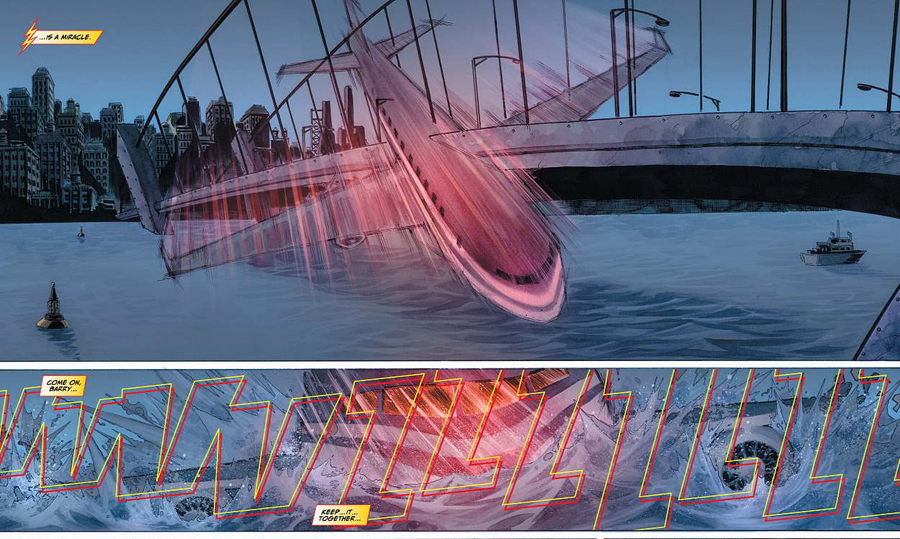
The only essential analysis, from the team themselves, via Newsarama’s Spoiler Sport:
Manapul: Right, he vibrated the entire airplane and all of its contents through the bridge. And he vibrated it long enough for the momentum of the plane to slow down.
Buccellato: You’ll notice that in some of the later panels, the edges of the plane break off. As he’s losing his grip on his ability to vibrate, the outer parts of the plane are no longer vibrating, which is why they broke off.
Manapul: Yeah, if you read the art, after the plane vibrates through the bridge, in the first panel, the entire plane is vibrating. And in the second, you’ll see that only the main cabin is still being vibrated, and the wings have snapped off. And it’s what’s keeping the plane on the surface of the water and preventing it from going all the way through. The Flash is able to hold on long enough until he gets on solid ground.
In the first issue, we established that he had a problem vibrating through the floor and doing so at the right frequency. But now, with his mind moving at a much faster speed, he’s able to calculate the right frequencies and the right things to do.
Buccellato: We could have spent a lot of time with words explaining this. We could have spent a whole issue explaining the plane, but obviously, we’re moving forward. So there is information in the art that people are going to have to read.
In addition to the blockbuster intro, issue #3 also featured more of Flash using Augmented Cognition, with hallmarks like the overlapping panels first used sparingly back in issue #1. Manapul and Buccellato had already made use of cliffhangers as well, and issue #3 followed suit.
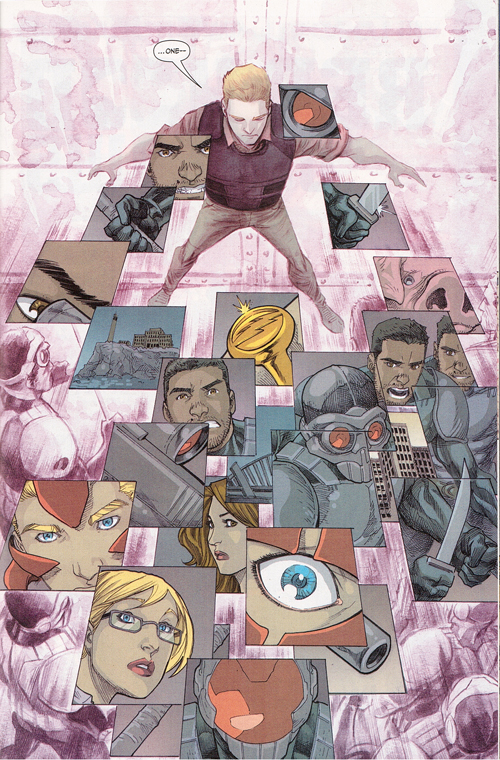
This week saw the release of Flash #4, focused on new antagonist Mob Rule. Even without a direct spotlight on the Fastest Man Alive, Manapul fills multiple two-page spreads with his now-signature layouts, and continues the creative paneling and use of sound-effects seen in the previous three issues.
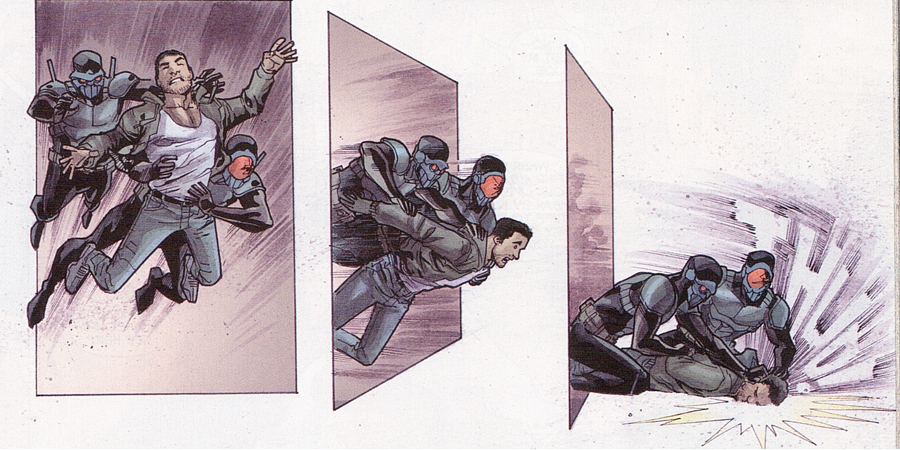
Manapul and Buccellato have stressed the importance of “moving forward” to the core of Flash. We close with a couple of previews from upcoming issues of Flash, courtesy of Newsarama and MTV Geek!

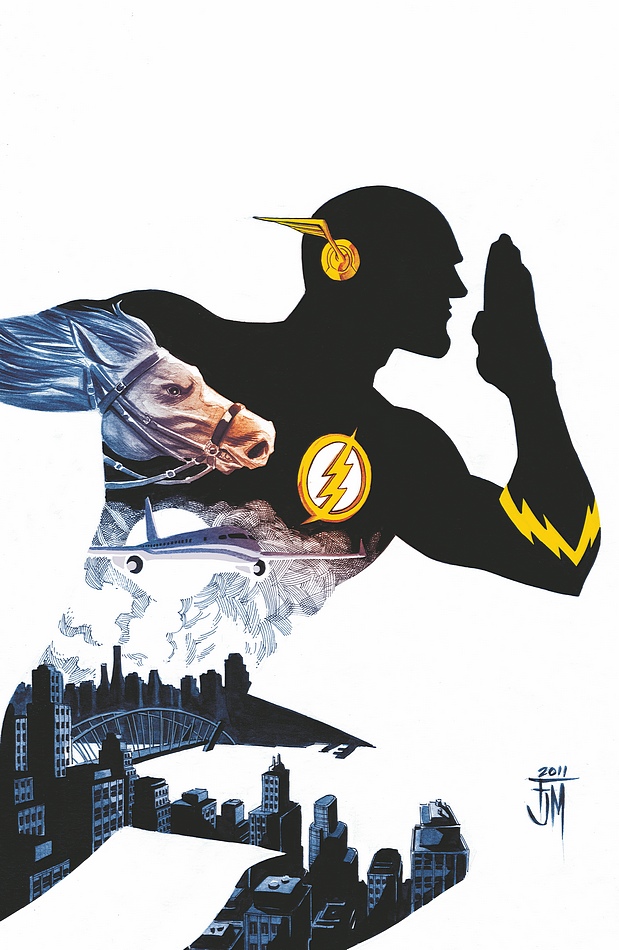
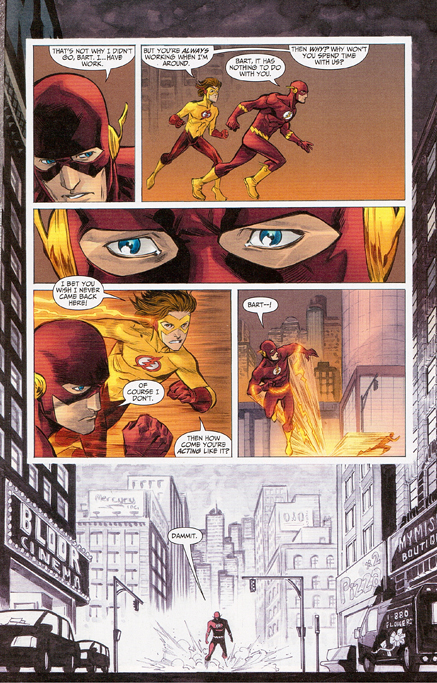
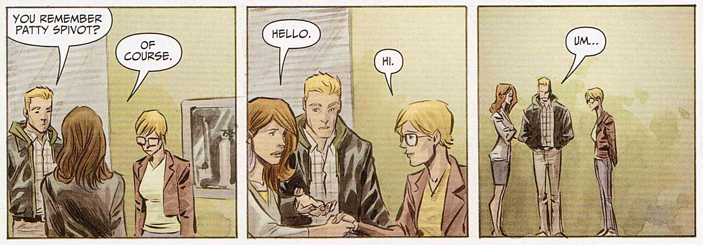
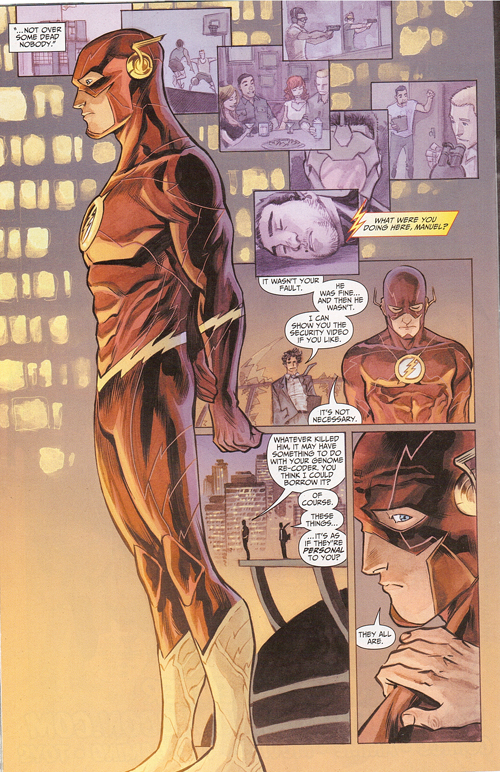
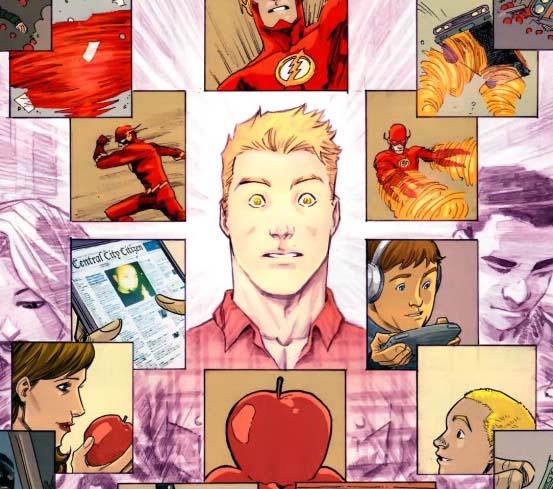

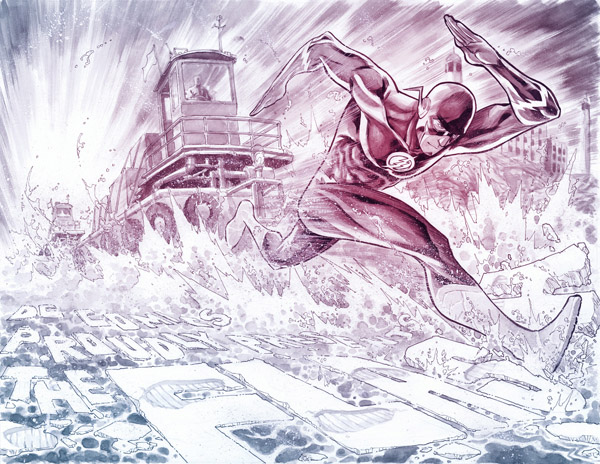
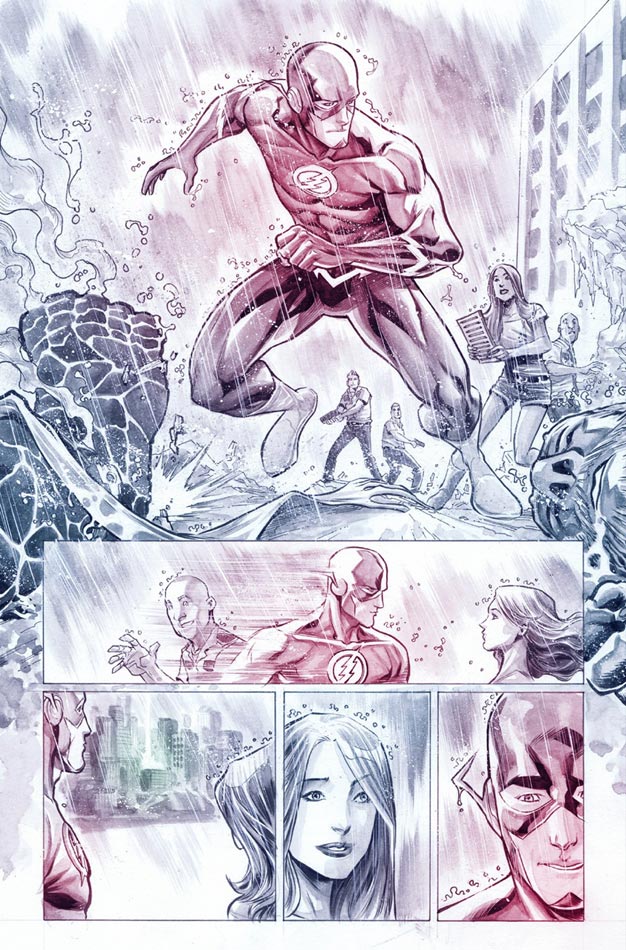
Great article! As an aspiring artist, this kind of stuff really intrigues me. Manapul is a huge talent, and an all around nice guy! I look forward to seeing what he has in store for us in 2012!
Well it took a while for me to get used to, but I am really enjoying his artwork now!
I loved Francis’s artwork from the beginning – but when he took over writing duties too, my gawd can that man put together a page. I’ve been talking about it non-stop to my friends and have hopefully converted a few people to the ways of the Speed Force. Not just great art in the history of the Flash, but great sequential art period.